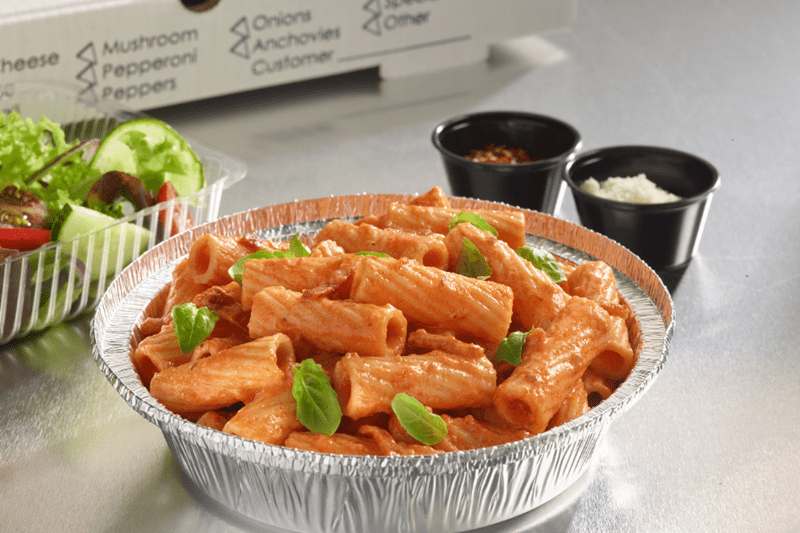


“It taught me the place I may get monetary savings and the place others may be losing cash,” says McMahon, whose enterprise is in Louisville, Kentucky. “I’ve been hanging round that breakeven line for about six months, so I’ve to observe it fastidiously.”
That “it” is McMahon’s steadiness sheet, the monetary snapshot of his enterprise’s well being. The info it provides tells him his enterprise’s out there money, the worth of his stock, who he owes and who owes him. Humbling because it was to make a $60 revenue in February, it a minimum of instructed McMahon the payments had been paid.
“I’m managing it, and a minimum of I don’t should borrow cash any extra,” he provides. “My greatest focus this yr has been caring for my very own books.”
At his accounting seminars, folks typically ask Jim Laube, “Why ought to I even have to take a look at that?” says Laube, a former company accountant and restaurant supervisor. “Why? As a result of it tells you a large number about your small business … issues {that a} (revenue and loss assertion) gained’t.”
A P&L or revenue assertion particulars an operation’s revenue or loss by evaluating bills and income over a selected month, quarter or yr. A steadiness sheet, then again, provides an operator a extra speedy view, exhibiting whether or not the enterprise has the money to pay its present payments (together with taxes and weekly or month-to-month commitments to suppliers and collectors) and whether or not those that owe it cash are paying on time.
Divided into two sides — property on the left, liabilities on the proper — the steadiness sheet “tells you the way solvent you might be by telling you the way a lot working capital you could have,” says Robert Langdon, a former CPA who now speaks to enterprise audiences. “The extra working capital you could have, the higher the chances are you’ll be capable of pay your payments.”
To mathematical minds like Laube’s, making a steadiness sheet is straightforward, however he is aware of many operators are uncomfortable with basic accounting. And whereas there’s no scarcity of small enterprise accounting software program out there, none are well worth the funding if an operator can’t or gained’t use them.
After a well-meaning member of the family tousled McMahon’s books, he took them over and began utilizing an internet program he says provides him all the data he wants. Laube says McMahon’s alternative is widespread, whereas different much less assured operators defer to professionals.
“This isn’t rocket science, so anybody ought to be capable of perceive accounting if it’s defined nicely to them,” he says. But even in the event you do defer to a bookkeeper or accountant for recommendation or to wholly handle your numbers, “don’t be intimated or say you don’t have to know this or that since you’ll let the bookkeeper care for it. That’s after they begin to develop little kingdoms and persuade themselves they’re invincible as a result of the proprietor doesn’t know what to ask. It’s as much as you to ask plenty of questions so you’ll be able to perceive what these numbers imply.”
Whereas a steadiness sheet supplies an instantaneous view of an operation’s solvency, Langdon says it additionally tells bankers much more when an operator seeks to borrow cash. A enterprise’s “present ratio” and its “debt-to-equity ratio,” each gleaned from the steadiness sheet, point out whether or not loaning cash to an operator is dangerous or sensible.
“After they’re taking a look at loaning cash to 1 enterprise versus the opposite, they’re trying on the odds that one can repay it versus the opposite,” Langdon says. “What they’re actually doing is betting on completely different companies to achieve success, and (the steadiness sheet) is the place they get these numbers.”
Present ratio (outlined as present property divided by present liabilities) signifies the quantity of working capital within the enterprise. If, for instance, a enterprise has $75,000 in present property and $37,500 in present liabilities, it has $37,500 in working capital and a present ratio of two to 1. The upper the ratio, the extra liquid the enterprise and the higher probability the proprietor pays payments.
“But when that ratio is right down to 1 to 1, meaning you’ve bought a minimum of as many liabilities as property and that you just won’t be capable of meet these obligations primarily based on the money coming in,” Langdon says.
A enterprise’s debt-to-equity ratio (how a lot of that enterprise collectors personal vs. how a lot the operator owns) is calculated by dividing present liabilities by present property. Due to this fact, if a enterprise has $200,000 in present property and $37,500 in present liabilities the debt-to-equity ratio is 29 p.c to 71 p.c — a extremely favorable unfold, Langdon says.
“The higher that ratio, the decrease the chance for the proprietor and the financial institution,” he says. Having that info acknowledged clearly on a steadiness sheet will increase the possibility a financial institution will lengthen credit score. “Banks mortgage money and count on to be repaid money plus curiosity. Whenever you’ve bought a very good debt-to-equity ratio, odds are you’ll be capable of pay them again.”
Why do I want a Stability Sheet?
It’s essentially the most speedy approach to assess your pizzeria’s fiscal well being now.
It’s what bankers will ask for first — not your P&L — if you apply for credit score.
It lets you understand how a lot money you could have, and the way a lot you’re owed.
It lets you understand how a lot of your small business you personal, and the way a lot collectors personal.
Confused and need to rent a bookkeeper or accountant? Verify any potential quantity cruncher with a number of exams (some are free, some include a payment) out there on the Web. You additionally may take a look at them by asking them to elucidate some accounting rules to you. It’ll present perception into how nicely or poorly ? they’ll talk with you sooner or later.
Steve Coomes is a former Pizza Right now editor and a contract author dwelling in Goshen, Kentucky.



“It taught me the place I may get monetary savings and the place others may be losing cash,” says McMahon, whose enterprise is in Louisville, Kentucky. “I’ve been hanging round that breakeven line for about six months, so I’ve to observe it fastidiously.”
That “it” is McMahon’s steadiness sheet, the monetary snapshot of his enterprise’s well being. The info it provides tells him his enterprise’s out there money, the worth of his stock, who he owes and who owes him. Humbling because it was to make a $60 revenue in February, it a minimum of instructed McMahon the payments had been paid.
“I’m managing it, and a minimum of I don’t should borrow cash any extra,” he provides. “My greatest focus this yr has been caring for my very own books.”
At his accounting seminars, folks typically ask Jim Laube, “Why ought to I even have to take a look at that?” says Laube, a former company accountant and restaurant supervisor. “Why? As a result of it tells you a large number about your small business … issues {that a} (revenue and loss assertion) gained’t.”
A P&L or revenue assertion particulars an operation’s revenue or loss by evaluating bills and income over a selected month, quarter or yr. A steadiness sheet, then again, provides an operator a extra speedy view, exhibiting whether or not the enterprise has the money to pay its present payments (together with taxes and weekly or month-to-month commitments to suppliers and collectors) and whether or not those that owe it cash are paying on time.
Divided into two sides — property on the left, liabilities on the proper — the steadiness sheet “tells you the way solvent you might be by telling you the way a lot working capital you could have,” says Robert Langdon, a former CPA who now speaks to enterprise audiences. “The extra working capital you could have, the higher the chances are you’ll be capable of pay your payments.”
To mathematical minds like Laube’s, making a steadiness sheet is straightforward, however he is aware of many operators are uncomfortable with basic accounting. And whereas there’s no scarcity of small enterprise accounting software program out there, none are well worth the funding if an operator can’t or gained’t use them.
After a well-meaning member of the family tousled McMahon’s books, he took them over and began utilizing an internet program he says provides him all the data he wants. Laube says McMahon’s alternative is widespread, whereas different much less assured operators defer to professionals.
“This isn’t rocket science, so anybody ought to be capable of perceive accounting if it’s defined nicely to them,” he says. But even in the event you do defer to a bookkeeper or accountant for recommendation or to wholly handle your numbers, “don’t be intimated or say you don’t have to know this or that since you’ll let the bookkeeper care for it. That’s after they begin to develop little kingdoms and persuade themselves they’re invincible as a result of the proprietor doesn’t know what to ask. It’s as much as you to ask plenty of questions so you’ll be able to perceive what these numbers imply.”
Whereas a steadiness sheet supplies an instantaneous view of an operation’s solvency, Langdon says it additionally tells bankers much more when an operator seeks to borrow cash. A enterprise’s “present ratio” and its “debt-to-equity ratio,” each gleaned from the steadiness sheet, point out whether or not loaning cash to an operator is dangerous or sensible.
“After they’re taking a look at loaning cash to 1 enterprise versus the opposite, they’re trying on the odds that one can repay it versus the opposite,” Langdon says. “What they’re actually doing is betting on completely different companies to achieve success, and (the steadiness sheet) is the place they get these numbers.”
Present ratio (outlined as present property divided by present liabilities) signifies the quantity of working capital within the enterprise. If, for instance, a enterprise has $75,000 in present property and $37,500 in present liabilities, it has $37,500 in working capital and a present ratio of two to 1. The upper the ratio, the extra liquid the enterprise and the higher probability the proprietor pays payments.
“But when that ratio is right down to 1 to 1, meaning you’ve bought a minimum of as many liabilities as property and that you just won’t be capable of meet these obligations primarily based on the money coming in,” Langdon says.
A enterprise’s debt-to-equity ratio (how a lot of that enterprise collectors personal vs. how a lot the operator owns) is calculated by dividing present liabilities by present property. Due to this fact, if a enterprise has $200,000 in present property and $37,500 in present liabilities the debt-to-equity ratio is 29 p.c to 71 p.c — a extremely favorable unfold, Langdon says.
“The higher that ratio, the decrease the chance for the proprietor and the financial institution,” he says. Having that info acknowledged clearly on a steadiness sheet will increase the possibility a financial institution will lengthen credit score. “Banks mortgage money and count on to be repaid money plus curiosity. Whenever you’ve bought a very good debt-to-equity ratio, odds are you’ll be capable of pay them again.”
Why do I want a Stability Sheet?
It’s essentially the most speedy approach to assess your pizzeria’s fiscal well being now.
It’s what bankers will ask for first — not your P&L — if you apply for credit score.
It lets you understand how a lot money you could have, and the way a lot you’re owed.
It lets you understand how a lot of your small business you personal, and the way a lot collectors personal.
Confused and need to rent a bookkeeper or accountant? Verify any potential quantity cruncher with a number of exams (some are free, some include a payment) out there on the Web. You additionally may take a look at them by asking them to elucidate some accounting rules to you. It’ll present perception into how nicely or poorly ? they’ll talk with you sooner or later.
Steve Coomes is a former Pizza Right now editor and a contract author dwelling in Goshen, Kentucky.









